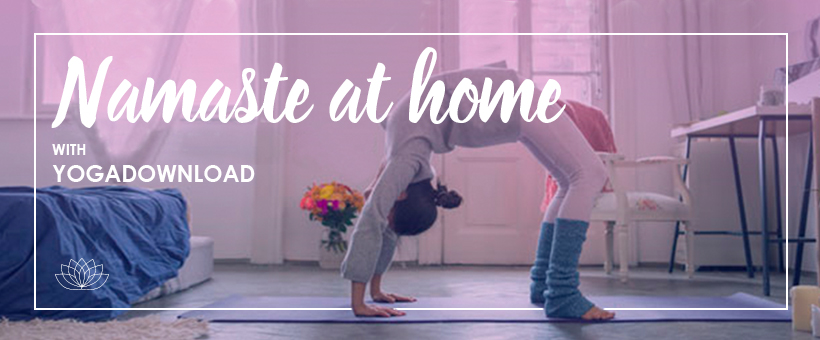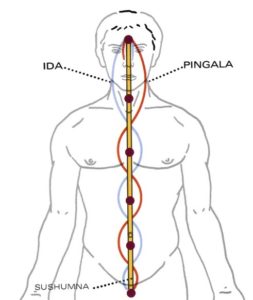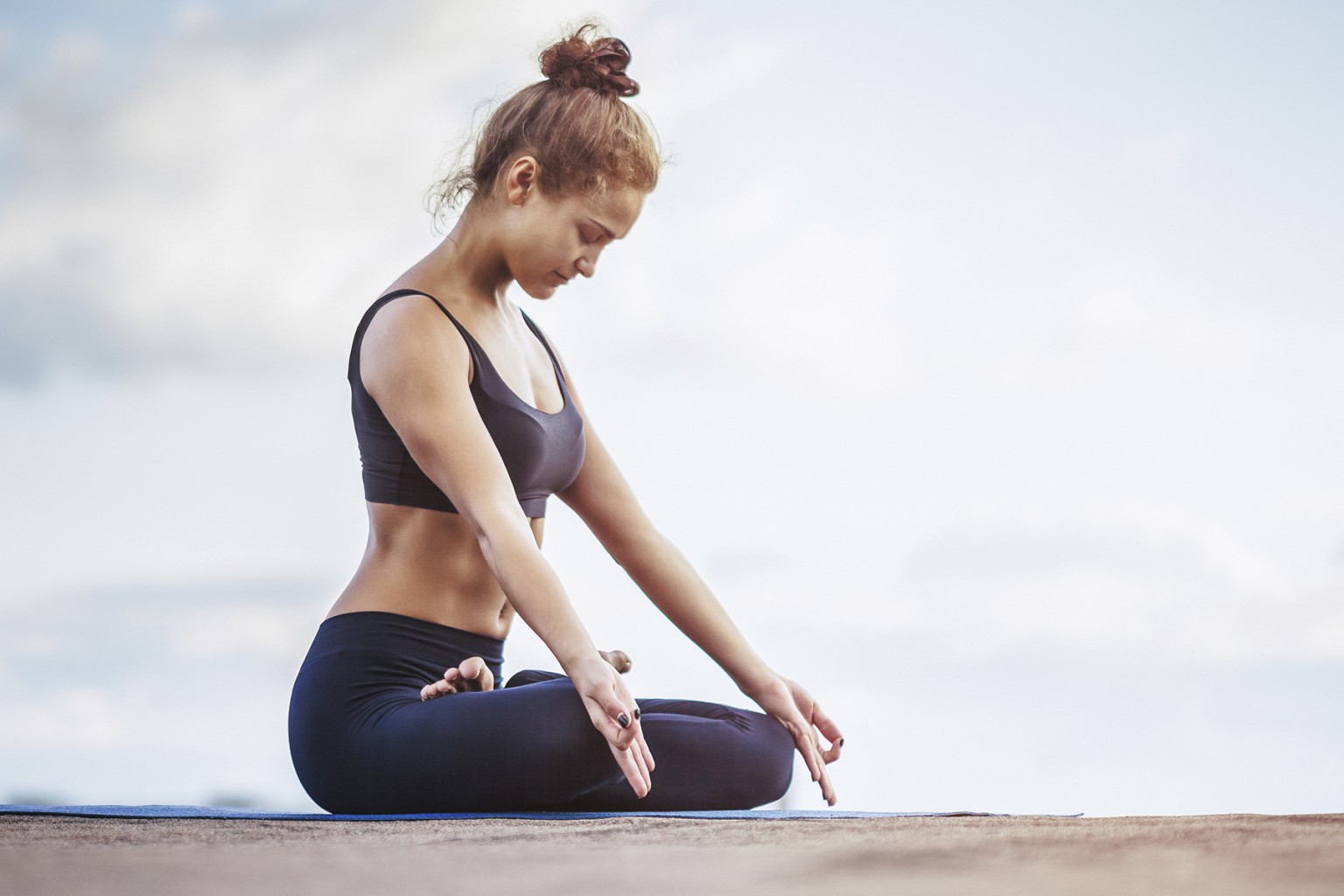Pranayama guide
The "pranayama": breathing, vital energy! An obvious fact, you will tell me... But have you never felt during certain activities how much you hold your breath? Don't we all use the expression: I'm short of breath? A sophrologist friend of mine even told me that some people just don't know how to breathe, and yet they are alive and well 😉
So, what's going on? Actually, breathing well is not a given, but good news: it can be worked on! And yoga is a wonderful practice for (re)discovering your breath.
Get on your yoga mat and together we will explore the links between breathing and yoga and discover pranayama!
What is breathing?
Breathing is a mechanism that oxygenates the body. It adapts to what the body does, according to the efforts it produces. The lungs take care of the exchanges between the body and the outside air.
When I say that people don't know how to breathe, what I mean is that breathing is mechanical and therefore everyone can breathe, but doesn't necessarily know how to be aware of their breathing. But we can realize that our breathing is short, unpleasant, not restful and that in some contexts it is no longer controlled at all. In a moment of anguish or panic we tend to say to people: "breathe", "you need to take long breaths", etc. to bring them back to themselves and their physical sensation.
But why wait until you are in an anxiety attack or exhausted to become aware of your breathing and therefore take care of yourself? Understanding pranayama and the practice of postures but also meditation or simple breathing exercises to be practiced daily can change your life.

Pranayama and its benefits
Pranayama consists of the term "prana" which could be translated as "breath" but it means more than that: it is the vital breath which goes far beyond the purely physical aspect of breathing.
"ayama" means many things but we will retain "control", "mastery". We often hear the term "extension of breath". Because it is not only the air that circulates in the body but a global energy ... we have already told you, yoga is indeed cosmic!
Concerning the air that circulates in us, it passes through "nadis", subtle and invisible energy channels. At the level of the spine, the sushumna channel is the main carrier of prana. "Ida" and "pingala" (left and right nostrils) contribute to the balance of the breath. I invite you to take a look at the article on chakras to complete the understanding of these elements here.

Pranayama is the 4th of the 8 members of yoga according to Patanjali. Therefore, it is easy to imagine that pranayama is only approached after many other acquisitions in the overall practice of yoga. In this case, it is interesting to have already worked one's breath with the postures before starting more complex pranayama exercises. But above all, you have to be supervised by a teacher right from the start - I'm making big eyes behind my screen right now. Concretely, pranayama is practiced rather after the asanas, or preferably at a distance from them! If breathing exercises are done in class, make sure they are gentle and meditative exercises.
With all this, how does the breathing work during the practice of the asanas? Because here too, prana is at the heart of your movements.
The practice of asanas and breathing
When you first started yoga you may have heard the teachers repeating to breathe through your nose. Hard, hard during palankasanas and chaturangas or after several greetings in the sun. But why then then? Because the nose acts as a filter and allows you to breathe cleaner air. If you practice at home, air out the air before practicing because the air inside is often very polluted. And if you can't take it anymore, breathe through your mouth, yoga is not there to torture you, and with practice, breathing through the nose will come by itself. We will also notice that certain postures or transitional movements are easier in inhalation than in exhalation: inhalation opens the heart in urdhva hastasana while exhalation leads to relaxation in uttanasa, for example.
When you begin to have a regular practice and you are more and more comfortable to become aware of your breathing, you can even make it sound through the breath we call ujjayi. Learn it with a teacher. It basically means breathing through your nose and slightly contracting your throat, much like yawning with your mouth closed.
In yoga, one movement is usually equivalent to one breath. It is with a certain habit that we get there, not overnight. Breathing through the nose during the postures allows us to concentrate and to calm the hamster in the head, or even to feel a certain calm in the postures that are unpleasant to our eyes.
Example: in the hip openings - my pet peeve - I choose to breathe in this part of my body, that is to say that I imagine the air circulating in this area and in general I will experience the posture and its posture much longer and serenely. In short, I direct my energy better and this is useful in all areas of life! Magic! Finding the effort in the discomfort with the breath is a phrase that speaks to me a lot in yoga.
Daily breathing exercises
You can practice exercises independently of the postures. For example, you can put your hand on your belly and follow the rhythm of inhalations and exhalations.
Breathing is a beautiful anchor in meditation practice: focus on the air that enters and exits your nostrils. It is fresh when entering and warm when leaving. You can also visualize the air that passes through the stomach, lungs, collarbones and then the upper back and goes back the other way around.
At the office, take a moment to move around, air out your body and mind and simply breathe. With a stressful meeting coming up: stop everything, sit down, close your eyes or contemplate something pleasant and breathe. Putting your hand on your stomach to follow your breathing is also a good idea at these times.
Is there an area of your body that hurts? It can also be interesting to breathe in pain, in the awkward area, even if this area is opposite your nose :-). Imagine the air flowing into the area and carrying the pain away from you.
In winter, don't hesitate to practice pranayama exercises every day, after having learned how to do them well with a teacher. For example, fire breathing: khapalabati and alternate breathing: nadhi sodhana, which are perfect to defend yourself against winter aggressions. We will come back to these practices in other articles.
In conclusion on pranayama
The attention paid to the breath and its physical and psychic benefits really makes the difference between yoga and other physical activities.
In yoga it is said that the more serene a person is, the more prana in him or her. On the other hand, the more disturbed a person feels, the more prana is lost. So let's try not to let ourselves be overwhelmed by the worries and stress of everyday life... by doing yoga, for example? 😉
Try breathing exercises with a teacher. Even when you feel serene, don't hesitate to practice regularly, because like everything else, it takes practice to control your breath and reap all the benefits.


